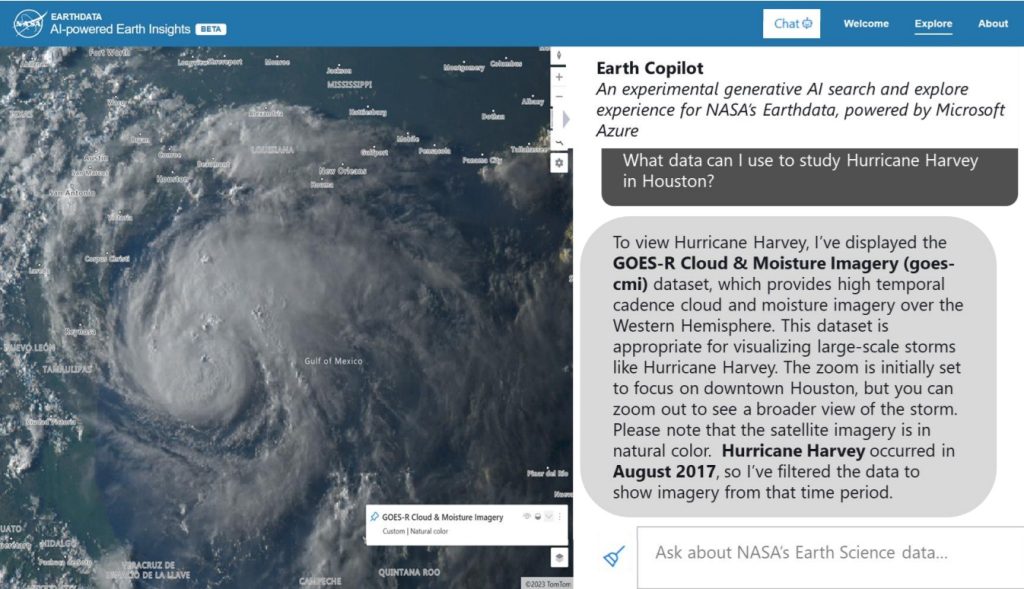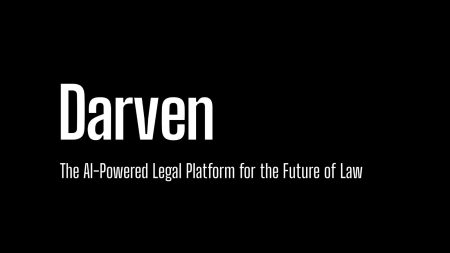Microsoft and NASA have collaborated to create Earth Copilot, a software tool that utilizes artificial intelligence and cloud computing to simplify the process of searching and analyzing Earth science data. This partnership is part of NASA’s Transform to Open Science Initiative, which aims to make over 100 petabytes of satellite imagery and other Earth science data more accessible to scientists, educators, policymakers, and the general public. The goal of this collaboration is to use AI and cloud technology to provide underserved communities with easy access to spaceborne information through simple, plain language queries.
Earth Copilot enables users to interact with NASA’s data repository conversationally, eliminating the need to navigate complex interfaces or understand geospatial analysis intricacies. Users can ask questions like “What was the impact of Hurricane Ian in Sanibel Island?” or “How did the COVID-19 pandemic affect air quality in the U.S.?” The AI system retrieves relevant datasets, streamlining the search process and making it intuitive. Microsoft’s corporate vice president for U.S. health and public sector industries, Tyler Bryson, emphasized the simplicity and efficiency of Earth Copilot in accessing vast amounts of data without technical complications.
The Earth Copilot project utilizes Microsoft’s Azure cloud platform and the customizable capabilities of Azure OpenAI Service to power the AI prototype. Azure offers a range of services, including machine learning, data analytics, and scalable cloud infrastructure, which ensure the system can handle complex queries and large datasets efficiently. The goal is to provide users with quick access to necessary information without being overwhelmed by technical complexities. The project aims to create a seamless, scalable solution that can evolve alongside NASA’s expanding data, tools, and applications.
NASA researchers are currently testing Earth Copilot to explore its capabilities, with plans to evaluate and fine-tune the platform. Following the testing phase, the NASA IMPACT team will consider integrating Earth Copilot into its Visualization, Exploration, and Data Analysis Project (VEDA). The collaboration between Microsoft and NASA represents a significant step toward democratizing access to Earth science data and making it more user-friendly for a wide range of stakeholders. By leveraging AI and cloud technologies, Earth Copilot aims to empower users to make informed decisions and gain insights from vast amounts of Earth science data.
Overall, the partnership between Microsoft and NASA in developing Earth Copilot highlights the potential of AI and cloud computing in simplifying the search and analysis of Earth science data. Through a conversational interaction approach and seamless query process, users can access relevant datasets without the need for technical expertise. The use of Azure’s services allows for efficient handling of complex queries and large datasets, ensuring a smooth and intuitive user experience. As the project undergoes testing and potential integration into NASA’s data analysis initiatives, Earth Copilot is poised to revolutionize access to valuable Earth science information for researchers, educators, policymakers, and the public.
In conclusion, Earth Copilot represents a significant advancement in making Earth science data more accessible and user-friendly through the integration of AI and cloud computing technologies. The collaboration between Microsoft and NASA aims to democratize access to spaceborne information and empower users to explore Earth science data through simple, conversational queries. By streamlining the search and analysis process, Earth Copilot has the potential to revolutionize how stakeholders interact with vast amounts of Earth science data, facilitating informed decision-making and insights across various industries and communities.















